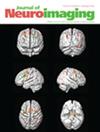Hyperattenuating Collateral Arteries and Accompanying Cortical Veins as Auxiliary Signs of M2 Occlusion on Dual-Phase CTA
Abstract
Background and Purpose
M2 middle cerebral arterial (MCA) occlusions present a greater radiological challenge when compared to more proximal occlusions and additional signs aiding detection could be helpful. We routinely image patients with a dual-phase CT angiography (CTA) protocol, encompassing a bolus-tracked arterial/early and then delayed-phase (40-s post contrast injection) acquisition. We screened a 12-month period of our local thrombectomy database as a preliminary investigation into additional signs that can be gleaned to aid M2 occlusion diagnosis when imaged using this technique.
Methods
We reviewed the CTA and digital subtraction angiographic (DSA) imaging in 10 consecutive patients with M2 MCA occlusions who subsequently underwent thrombectomy.
Results
All patients showed the presence of hyperattenuating M3 and M4 vessels distal to the occlusion on delayed-phase but not early-phase CTA (despite venous opacification evident on the latter). Compared to the contralateral side, attenuation values were significantly elevated in these vessels (202.3 [23.9] vs. 108.5 [16.4] Hounsfield units [HU]; 95% confidence interval [CI] of difference: 69.7–117.9, p < 0.0001). Eight of 10 patients also showed associated ipsilateral hyperattenuating cortical veins; the attenuation difference compared to contralateral cortical veins was 263.5 (58.3) vs. 151 (16.7) HU, 95% CI: 69.0–156.0, p = 0.0005. Collateral appearance and washout were much brisker on DSA suggesting that the signs on delayed-phase CTA represent the retrograde accumulation of contrast material distal to the occlusion after multiple contrast passes with slowed resultant venous flow accounting for an accumulation on the venous side.
Conclusion
An additional phase at 40-s displays hyperattenuating distal arteries and cortical veins that could aid in occlusion detection.

 求助内容:
求助内容: 应助结果提醒方式:
应助结果提醒方式:


